I had previously done this for the Cardinals during last season's Playoffs, even though neither New York team traveled there during the regular season or the postseason.
Before You Go. Check AZcentral.com, the website for Phoenix's largest newspaper, the Arizona Republic, for the weather. Because of the legendary Arizona "dry heat," the Cardinals usually got few home games in September, leading to some slow starts that led to them missing the Playoffs. But the new stadium has a retractable roof, so that won't be an issue.
Still, if the Giants or Jets are playing there in November or December (or, if the Giants make the Playoffs, in January), once you get on the plane, you'll want to ditch your winter coat. For Monday and Tuesday, it's forecast to be in the mid-80s by day and the mid-60s by night.
Arizona's infamous Daylight Savings Time issue has been settled: The State is on Mountain Time when New York is on Daylight Savings Time, and on Pacific Time when we're on Standard Time. This isn't the DST time of year. So you'll be on Mountain Time, 2 hours behind New Jersey and New York City. Adjust your timepieces accordingly.
If you're thinking of making a side trip into Mexico, you should know that Phoenix to the border is a 4-hour drive at the least. No public transportation. You'll need a passport, and you'll also need Mexican driving insurance, which you might be able to get at the Mexican consulate in Phoenix. In other words, it's not really worth the trip.
Tickets. The Cardinals averaged 64,185 fans per home game last season, about 98 percent of capacity. That's what happens when your stadium can beat the weather. That's also what happens when your stadium gives you advantage: That breeds winning, which breeds more fan participation. So getting tickets could be hard.
Cardinal tickets are among the cheapest in the NFL. Seats in the Main Level, the 100 sections, are $117 on the sidelines and $73 in the end zone. In the Terrace Level, the 400 sections, they're $65 on the sidelines and $30 in the end zones.
Getting There. It's 2,458 miles from Times Square downtown Phoenix, and 2,453 miles from MetLife Stadium in East Rutherford to the University of Phoenix Stadium in Glendale. In other words, if you're going, you're flying.
You think I'm kidding? Even if you get someone to go with you, and you take turns, one drives while the other one sleeps, and you pack 2 days' worth of food, and you use the side of the Interstate as a toilet, and you don't get pulled over for speeding, you'll still need nearly 2 full days to get there. One way.
But, if you really, really want to... You'll need to get on the New Jersey Turnpike. Take it to Exit 14, to Interstate 78. Follow I-78 west all the way through New Jersey, to Phillipsburg, and across the Delaware River into Easton, Pennsylvania. Continue west on I-78 until reaching Harrisburg. There, you will merge onto I-81. Take Exit 52 to U.S. Route 11, which will soon take you onto I-76. This is the Pennsylvania Turnpike, the nation’s first superhighway, opening in 1940.
The Turnpike will eventually be a joint run between I-76 and Interstate 70. Once that happens, you'll stay on I-70, all the way past Pittsburgh, across the little northern panhandle of West Virginia, and then across Ohio, Indiana and Illinois, into Missouri.
At St. Louis, take Exit 40C onto Interstate 44 West, which will take you southwest across Missouri into Oklahoma. Upon reaching Oklahoma City, take Interstate 40 West, through the rest of the State, across the Texas Panhandle and New Mexico, into Arizona. At Flagstaff, take Interstate 17 South, which will take you into Phoenix. Take Interstate 10 West to Exit 133B, which will lead you to State Route 101. Take Exit 6 to the arena/stadium complex
If you do it right, you should spend about an hour and 15 minutes in New Jersey, 5 hours and 30 minutes in Pennsylvania, 15 minutes in West Virginia, 3 hours and 45 minutes in Ohio, 2 hours and 45 minutes in Indiana, another 2 hours and 45 minutes in Illinois, 5 hours in Missouri, 6 hours in Oklahoma, 3 hours in Texas, 6 hours and 15 minutes in New Mexico, and 5 hours and 30 minutes in Arizona. That's about 42 hours. Counting rest stops, you're probably talking about 55 hours.
That's still faster than Greyhound, averaging around 68 hours, including a 1:45 bus-change in Richmond, a 1:15 stopover in Charlotte, an hour's bus-change in Atlanta, an hour's stopover in Birmingham, a 45-minute stopover in Jackson, Mississippi, an hour's stopover in Shreveport, a 1:30 bus-change in Dallas (that's right, changing buses 3 times each way), and a 1:15 stopover in El Paso. It's $514 round-trip ($440 with advanced purchase). The station is at 2115 East Buckeye Road, adjacent to Sky Harbor International Airport. Number 13 bus to downtown.
The way Amtrak has it set up now, it's so convoluted that I can't even recommend looking it up. Their downtown Union Station has been permanently closed, making the nearest station the one in Maricopa, 34 miles south of downtown.
But flights, usually changing in Charlotte, Chicago or Dallas, are actually among the cheapest to any big-league city, and, if ordered ahead of time, can be had for under $900.
Once In the City. While the Cardinals (as do MLB's Diamondbacks and the NHL's Coytes, but not the NBA's Suns) have the State name as their geographic identifier -- apparently from a Native American word meaning "small spring" -- they play in Arizona's State capital, Phoenix.
Jack Swilling, a Confederate veteran who founded the place in 1867, accepted the suggestion of a fellow settler, an Englishman named Lord Duppa: Since it was on the site of a previous Indian civilization, it should be named Phoenix, for the mythical bird that rose from its own ashes. The city was incorporated in 1881, making it the youngest city in American major league sports.
The State House in Phoenix
Home to just 100,000 people in 1950, Phoenix saw huge growth in the 2nd half of the 20th Century, thanks in large part to the growth of the air-conditioning industry: 440,000 by 1960, 580,000 by 1970, 800,000 by 1980, and it surpassed the 1 million mark in the early 1990s.
All this made it an expansion target: The Suns arrived in 1968, the NFL's St. Louis Cardinals in 1988 (after the Philadelphia Eagles had to quash a moving-there rumor earlier in the decade), and the first Winnipeg Jets in 1997 (after the WHA had the Phoenix Roadrunners in the 1970s). Today, Phoenix is home to 1.5 million people, with 4.4 million in its metropolitan area.
The sales tax in Arizona is 5.6 percent, but it's 8.3 percent within the City of Phoenix. ZIP Codes for Arizona start with the digits 85 and 86, and the Area Codes are 602 (for Phoenix), 480 and 623 (for the suburbs).
Central Avenue is the source street for east-west house numbers; oddly, the north-south streets are numbered Streets to the east, and numbered Avenues to the west. Washington Street divides addresses into north and south. A single ride on Phoenix buses and Valley Metro Rail is $2.00, with an All-Day Pass a bargain at $4.00.
A Valley Metro Rail train
Going In. The Glendale Sports & Entertainment District, in the Phoenix suburb of Glendale, consists of The University of Phoenix Stadium, home to the Arizona Cardinals since 2006; and the Gila River Arena, home to the Coyotes since 2003.
The complex is about 17 miles northwest of downtown Phoenix. The official address of the stadium is 1 Cardinals Drive, and that of the arena is 9400 W. Maryland Avenue. Number 8 bus from downtown to 7th & Glendale Avenues, then transfer to Number 70 bus, to Glendale and 95th Avenue, then walk down 95th. If you drive in, parking starts at $10.
The field is laid out not quite north-to-south, and can be rolled out of the stadium, to get some sun while the roof is closed.
University of Phoenix Stadium, with the field rolled out.
Note the end zone markings: This was Super Bowl Week 2008.
The Gila River Arena, home of the Coyotes, is in the background.
New York Tri-State Area sports fans know the stadium as the place where the Giants derailed the New England Patriots' bid for the NFL's 1st 19-0 season. The Cardinals defeated the Philadelphia Eagles there in January 2009 to advance to Super Bowl XLIII. The stadium is also home to the Fiesta Bowl. (There is an actual University of Phoenix, on the ground, not just on the Internet. But that's not here.) It's hosted 3 matches of the U.S. soccer team, most recently a 1-0 loss to Colombia in the Copa America this past June 25.
Food. As a Southwestern city, you might expect Phoenix to have Mexican, Spanish, Western and Southwestern food themes. Which is the case. Grande Rojo and Touchdown Tortilla stands are both on the east side of the Main Level concourse.
They also have stands for Club Burger (customizable hamburgers), Tacho (nachos with tater tots), Indian Fry Bread Tacos (this being Arizona, I'm presuming that, in this case, "Indian" means "Native American" rather than "South Asian"), Fry Bread Dessert (a Southwest take on that great Middle Atlantic States standard, funnel cake), Pig Wings (right, the Cards will win the Super Bowl when pigs fly... actually, it's pork shanks mixed with tater tots), Fajita Sausage (trying to mix the franchise's Midwestern heritage with their Southwestern residence, maybe?) and Not-Your-Average Sundae (ice cream in a cone made of cinnamon crisp, making it look like a giant nacho).
Team History Displays. The Arizona Cardinals have not won the NFL Championship since December 28, 1947. That's 69 years and 2 cities ago: Chicago (1920 to 1959) and St. Louis (1960 to 1987). They reached the NFL Championship Game again the next year, but lost the 1948 title to the team they beat for the 1947 title: The Philadelphia Eagles. They also won the NFL Championship, very controversially, in 1925.
There is no representation in the stadium for these achievements. Nor is there for the NFC East Championships they won in St. Louis in 1974 and '75, nor for the Wild Card berth they reached in St. Louis in 1982. Nor for the Wild Card berths they've won in Arizona in 1998 and 2014. But they do have them, hanging in the stadium's south "Red Zone," for their 2008 NFC and NFC Western Division Championships, and their 2009 and 2015 NFC West titles.
The Cardinals have 5 retired numbers. Only 1 is from their Arizona years, and that 1 is tragic: Number 40, Pat Tillman, the safety from Arizona State who left the NFL to enlist in the U.S. Army after the 2001 season, and was killed fighting the Taliban in Afghanistan in 2004.
From their St. Louis period, they retired 8 for Larry Wilson, one of the greatest safeties of all time; and 88 for J.V. Cain, a tight end who died of an undetected congenital heart defect -- on his 28th birthday, no less -- at the Cardinals' 1979 training camp.
From their Chicago period, they retired 77 for Stan Mauldin, a two-way tackle who suffered a heart attack and died during a 1948 game; and 99 for Marshall "Biggie" Goldberg, a two-way halfback who'd led the University of Pittsburgh to the 1937 National Championship. Both were members of the Cards' '47 NFL Champs.
The Cards have a Ring of Honor at University of Phoenix Stadium. It honors 16 men:
* From Chicago: Owner Charles Bidwill, coach Jimmy Conzelman, quarterback John "Paddy" Driscoll, two-way back Marshall Goldberg, two-way back Ernie Nevers, two-way back Charlie Trippi, running back Ollie Matson and cornerback Dick "Night Train" Lane. All but Goldberg are also in the Pro Football Hall of Fame.
* From St. Louis: Safety Larry Wilson, offensive tackle Dan Dierdorf, cornerback Roger Wehrli and receiver Roy Green. All but Green are in the Hall of Fame.
* From Arizona: Quarterback Kurt Warner, cornerback Aeneas Williams, and safeties Pat Tillman and Adrian Wilson. Williams is in the Hall of Fame.
Lane and Wilson were named to the NFL's 75th Anniversary Team in 1994, and The Sporting News' 100 Greatest Football Players in 1999. Lane, Nevers and Warner were named to the NFL Network's 100 Greatest Players in 2010.
There is an Arizona Sports Hall of Fame, but the only Cardinals figure yet elected is Jake Plummer, and he's mainly in for what he did as quarterback at Arizona State. Even Pat Tillman has not yet been elected.
Stuff. The AZone, the Arizona Cardinals Team Store, is located on the ground floor between Gate 2 and the box office. You can find the usual team-themed stuff there. Perhaps, due to Arizona's Western heritage, you can find cowboy hats with the team's logo on them.
In 2010, Sara Gilbert (not the Roseanne actress now on CBS' The Talk) wrote The Story of the Arizona Cardinals, and that's as close as you're going to get to a good history of the team. They haven't won a Super Bowl, so there's no commemorative DVD, however the NFL did put out a DVD for their 2008 NFC Championship season, their only appearance in an NFL championship game (under any name) since Dewey didn't actually defeat Truman.
During the Game. A recent Thrillist article on "The Most Obnoxious Fans In the NFL" ranked Cardinal fans 28th, making them the 5th-least obnoxious, saying:
Kudos to Cards fans, you spent 18 years getting cooked on Sundays in Sun Devil Stadium as your team earned a whopping one playoff appearance. Sure, you’re a city of transplants or locals (who grew up rooting for the Cowboys), but you’ve flocked to this perpetually mediocre franchise like it’s an AMC 24 in August. Your new domed stadium is one of the loudest in football, probably because every single one of your fans is AT THE GAME. Seriously, has anybody outside Arizona ever met an actual Cardinals fan?
Wearing Giants or Jets gear in Arizona will not endanger your safety. The Cardinals' rivals are the Dallas Cowboys (understandably, both in terms of geography and taste), the San Francisco 49ers, the Seattle Seahawks and the (fill in the city) Rams, their NFC West opponents. Arizonans may not be fond of New Yorkers, but they didn't give us a hard time during the 2001 World Series or Super Bowl XLII, and they won't do it during a Giant or Jet visit.
For the most part, Arizona fans are okay, not making trouble for fans of teams playing the NFL Cardinals, NBA Suns or MLB's Diamondbacks, either. In fact, their biggest rivalry is intrastate: The University of Arizona vs. Arizona State University. It's a heated rivalry... but it's a dry heat.
The Cardinals hold auditions for National Anthem singers, instead of having a regular singer. Their fight song is "The Arizona Cardinals Are Charging" -- I wonder how the San Diego (for the moment) Chargers feel about that. Their mascot is Big Red the Cardinal, a name that goes back to their St. Louis days, when the team was known as the Big Red.
Well, he certainly looks tougher than Fredbird,
the neighbor he left behind in St. Louis.
The south end zone is known as the Red Zone, and it is there that they put their most vocal fans, simulating a college football student section or the "end" at an English soccer game.
After the Game. Phoenix does have crime issues, but you should be safe as long as you stay downtown. What's more, the arena is in the suburbs. It's incredibly unlikely that Cardinal fans will bother you, and the fact that the Giants and Jets aren't rivals to them helps.
If the game is a matinee, the Westgate Mall, to the north across Coyotes Blvd., will be open after the game if you want to do some postgame dining or shopping. A McFadden's is outside the arena at the northwest corner, and a Saddle Ranch Chophouse at the northeast corner.
As for anything New York-friendly, the closest I can come at this time is a place called Tim Finnegan's, the local Jets fan hangout, but that's 11 miles north of downtown, at 9201 North 29th Avenue. It appears that the local football Giants fan club meets at the Blue Moose, 7373 E. Scottsdale Mall, 11 miles northeast of downtown. Light Rail to Arizona State, then transfer to Bus 72. I've read that a Yankee Fan hangout is at LagerFields Sports Grill, at 12601 N. Paradise Village Pkwy. W., 14 miles northeast of downtown. Alas, I can find nothing Mets-specific in the area.
If you visit Phoenix during the European soccer season, as we are now in, the best "football pub" in Arizona is the George & Dragon Pub, which opens at 7:00 AM on matchdays. 4240 N. Central Avenue, about 3 miles north of downtown. Bus 13 to Buckeye Road & Central Avenue, then transfer to Bus ZERO to Farrington Lane. Unless you're a Liverpool fan, or you'd prefer to stay downtown, in which case you can go to the Rose and Crown, at 628 E. Adams Street, 2 blocks north of the ballpark.
Sidelights. Phoenix's sports history is relatively brief, and not very successful.
UPDATE: On February 3, 2017, Thrillist made a list ranking the 30 NFL cities (New York and Los Angeles each having 2 teams), and Phoenix came in 24th, in the bottom 1/3rd:
Imagine the movie Cocoon, but a city. Actually less a city and more like several subdivisions connected by golf courses and upscale outdoor malls. But still imagine the movie Cocoon because it's a pretty good movie.
On November 30, 2018, Thrillist published a list of "America's 25 Most Fun Cities," and Phoenix came in 21st.
There are some notable locations, some of them involving sports:
* Chase Field and Talking Stick Resort Arena. The capital of Arizona sports is 2 buildings separated by 2 blocks and the Jefferson Street Garage, which provides parking for both.
The Arizona Diamondbacks have played since their 1998 inception at Chase Field, a retractable-roof stadium, originally named Bank One Ballpark, and having that name during what remains the Diamondbacks' only World Series thus far, 2001. It looks like a big airplane hangar, without much atmosphere. True, there is that pool in the right-center-field corner... but what's a pool doing at a ballpark?
UPDATE: Major League Baseball is now concerned enough about developments at Chase Field that it might force the Diamondbacks to move.
The Talking Stick Resort Arena, previously known as the US Airways Center and the AmericaWest Arena for a previous airline, it is 2 blocks west of Chase Field, at 2nd & Jefferson. The Suns have played here since 1992, and the WNBA's Phoenix Mercury since 1997. The Coyotes played here from 1996 to 2003.
The arena's address is 201 E. Jefferson Street, and the ballpark's is 401 E. Jefferson Street. Both buildings can be reached on Metro Light Rail via the Jefferson Street & 3rd Street station.
* Arizona Veterans Memorial Coliseum. The Grand Canyon State's 1st home to big-league sports, opening in 1965, was home to the Suns from their 1968 arrival until 1992, and to the World Hockey Association's Phoenix Roadrunners from 1974 to 1977.
Elvis Presley sang at the
Coliseum on September 9, 1970, and again on April 22, 1973. Early in his
career, on June 9, 1956, he sang at a grandstand at the adjoining Arizona State
Fairgrounds. The next day, he sang at the Rodeo Grounds in Tucson. He also sang at the Tucson Community Center on November 9,
1972 and June 1, 1976. (While
individual ex-Beatles have performed in Arizona, the band as a whole did not do
so on any of their 3 North American tours.)
The Coliseum still stands, and is part of the State Fairgrounds. 1826 W. McDowell Road. Northwest of downtown. Number 15 bus to 15th & McDowell, then 3 blocks west.
* Phoenix Municipal Stadium. This ballpark was home to the Phoenix Giants/Firebirds from its opening in 1964 until 1991, and is the current spring training home of the Oakland Athletics, the Diamondbacks' Rookie League team, and Arizona's State high school baseball championship. 5999 E. Van Buren Street. East of downtown, take the Light Rail to Priest Drive/Washington station, then a short walk up Priest.
* Scottsdale Stadium. This stadium was home to the Firebirds in their last years, 1992 to 1997. Its seating capacity of 12,000, 4,000 more than Phoenix Municipal, was meant to showcase the Phoenix area as a potential major league market. It's the San Francisco Giants' spring training site, and replaced a previous stadium on the site that dated to 1956, used as a spring training home for the Giants, A's, Red Sox, Orioles and Cubs -- sometimes all at the same time.
Because it was the Cubs' spring training home, thus leading to Phoenix becoming "Chicago's Miami," where retirees from the city tend to go (paging Michael Wilbon of the Washington Post & ESPN's Pardon the Interruption & NBA coverage), it was where former Cub catcher Randy Hundley hosted the very first baseball fantasy camp. As Met fans, you might remember Randy's furious reaction to Tommie Agee scoring on a controversial umpiring call at home plate at Shea in September 1969. You might also remember Randy's son, former Met catcher Todd Hundley.
7408 E. Osborn Road, at Drinkwater Boulevard. Northeast of downtown. Light Rail to Veterans Way/College station, then transfer to Number 72 bus to Osborn, then walk 2 blocks east.
* Arizona State University. The University of Arizona is 114 miles away in Tuscon, but ASU is just a 24-minute Light Rail ride from downtown. The station is at 5th Street & Veterans Way, and is 2 blocks away from Sun Devil Stadium and the Wells Fargo Arena, home to their football and basketball teams, respectively.
Sun Devil Stadium was built in 1958, and ASU still plays there rather than move to the larger, more modern (but well off-campus) University of Phoenix Stadium. The Cardinals played there from 1988 to 2005, and the Fiesta Bowl was held there from 1971 to 2006.
Sun Devil Stadium, at the foot of Tempe Butte
The Wells Fargo Arena
was previously known as the ASU Activity Center. Elvis sang there on March 23, 1977.
Packard Stadium, opened in 1974, is home to the ASU baseball program, one of the most successful college baseball teams, east of the stadium and arena, at Rural Road and Rio Salado Parkway. The Sun Devils have won 5 National Championships, most recently in 1981. Their legends include Reggie Jackson, Barry Bonds, and current stars Dustin Pedroia and Andre Ethier. Notable ASU and Met alumni include Gary Gentry, Duffy Dyer, Lenny Randle, Craig Swan, Hubie Brooks, Paul Lo Duca and Ike Davis.
ASU’s Gammage Auditorium, at the other end of the campus, hosted one of the 2004 Presidential Debates between George W. Bush and John Kerry. 1200 S. Forest Avenue.
The US Airways Center, Wells Fargo Arena, University of Phoenix Stadium, and the University of Arizona's McKale Center have all hosted NCAA basketball tournament games, but, as yet, the State of Arizona has never hosted a Final Four -- although the University of Phoenix Stadium certainly could. UA has been in the Final Four in 1988, 1994, 1997 and 2001, winning it all in 1997; but ASU has never gotten any closer than the Sweet 16, in 1995.
* Arizona Science Center. Phoenix is not a big museum center. And while there have been Native Americans living in Phoenix for thousands of years, and Spaniards/Mexicans for hundreds, its Anglo history is rather short. No Arizonan has ever become President (although Senators Barry Goldwater and John McCain got nominated), so there's no Presidential Library or Museum. And it doesn't help history buffs that the city only goes back to 1867, and Statehood was gained only in 1912. But the Science Center is at 4th & Washington, just a block from the ballpark. And Arizona State has a renowned Art Museum.
The tallest building in Phoenix, and in all of Arizona, is the Chase Tower, bounded by Central Avenue and Van Buren, 1st and Monroe Streets. That it's only 483 feet, and that no taller building has been built in the city since it opened in 1972, says something about this city, but I'm not sure what. But the city seems to be intent on growing outward, not upward.
Television shows set in Phoenix, or anywhere in Arizona, are few and far between. The High Chaparral, another Western created by Bonanza creator David Dortort, ran on NBC from 1967 to 1971, and is fondly remembered by some.
But the best-remembered show is Alice, starring Linda Lavin as one of several waitresses at fictional Mel's Diner, running on CBS from 1976 to 1985. Although the show was taped in Hollywood (Burbank, actually), that once-famous "14-ounce coffee cup" sign is still used outside a real working diner in Phoenix. It was Lester's, until the owner agreed to change the name to "Mel's Diner" for the publicity. Today, it's Pat's Family Diner, at 1747 NW Grand Avenue, 2 miles northwest of downtown. Number 15 bus to 15th Avenue & Pierce Street, and then walk one block east to Grand, Pierce, and 12th. There are also still-in-business diners in Ohio and Florida that use the same sign design. "Pickup!"
Movies set in modern-day Arizona usually show the Grand Canyon or the Hoover Dam. Notable on this list is Thelma & Louise, in which Geena Davis and Susan Sarandon drive a 1966 Ford Thunderbird into the Canyon rather than be captured by the FBI, enacting a distaff version of Butch Cassidy & the Sundance Kid. National Lampoon's Vacation and Natural Born Killers also used Arizona as a backdrop.
The vast majority of movies set in Arizona have been Westerns, including the 1957 and 2007 versions of 3:10 to Yuma, the 1950 film Broken Arrow (not the later John Travolta film of the same title), Fort Apache (not the later Paul Newman film set in The Bronx), Paul Newman's Hombre, Johnny Guitar, A Million Ways to Die In the West, No Name On the Bullet, and all the films based on the 1881 Earps vs. Clantons gunfight, including My Darling Clementine in 1946, Gunfight at the O.K. Corral in 1957, Tombstone in 1993 and Wyatt Earp in 1994.
If you're a Western buff, and you want to see the site of the legendary gunfight, the official address is 326 East Allen Street, Tombstone, AZ 85638. Reenactments are held daily. Be advised, though, that it's 184 miles southeast of downtown Phoenix, a 3-hour drive, and ain't no Greyhound or Amtrak service, stranger. It's also just 50 miles from the Mexican border.
*
If you go to Phoenix to see the Giants or Jets play the Cardinals, you won't be subjected to Arizona's usual intense heat, and you can probably see an NFL game relatively cheap. Have fun!
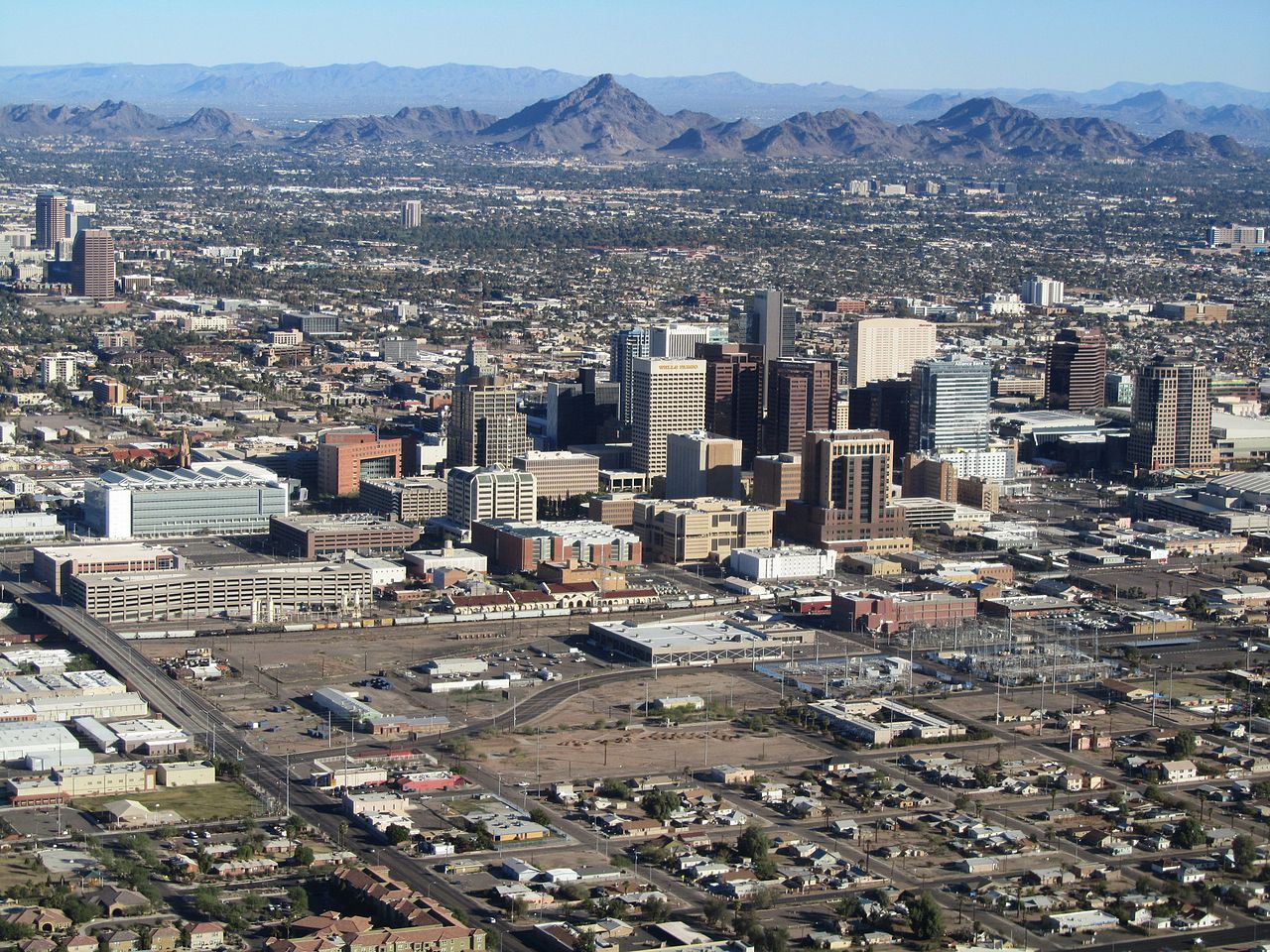

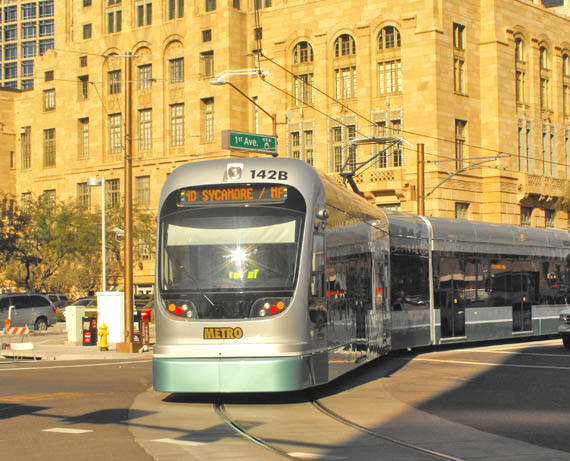
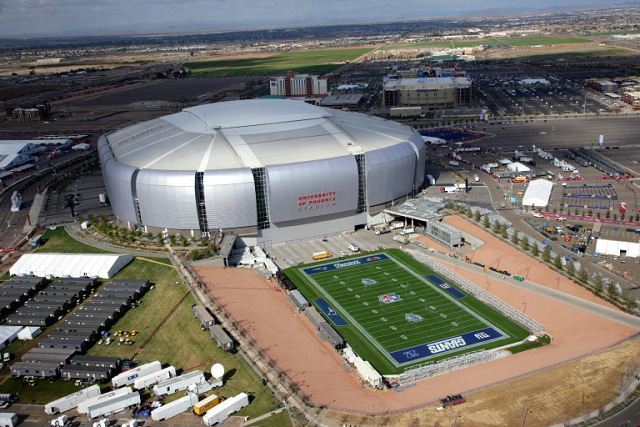
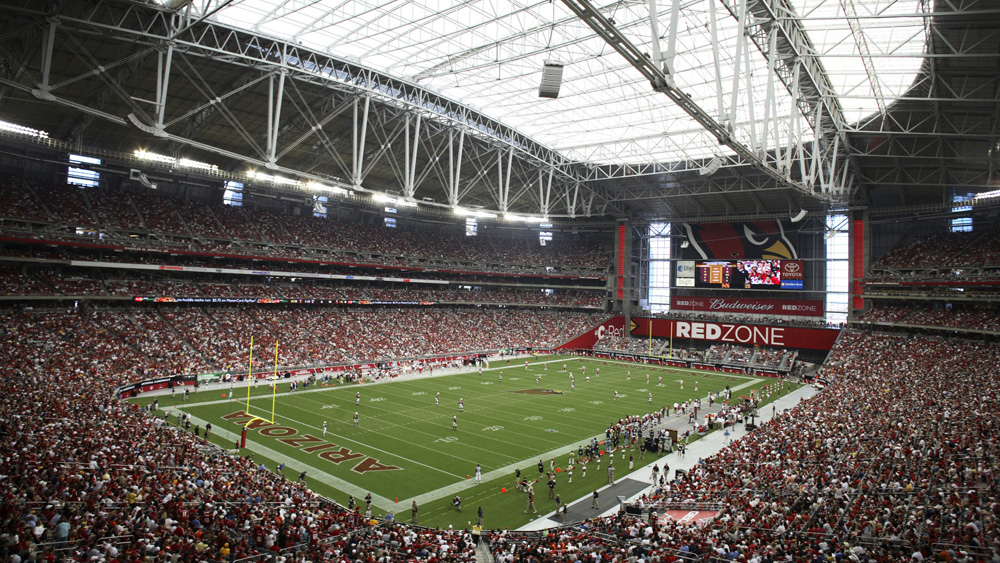

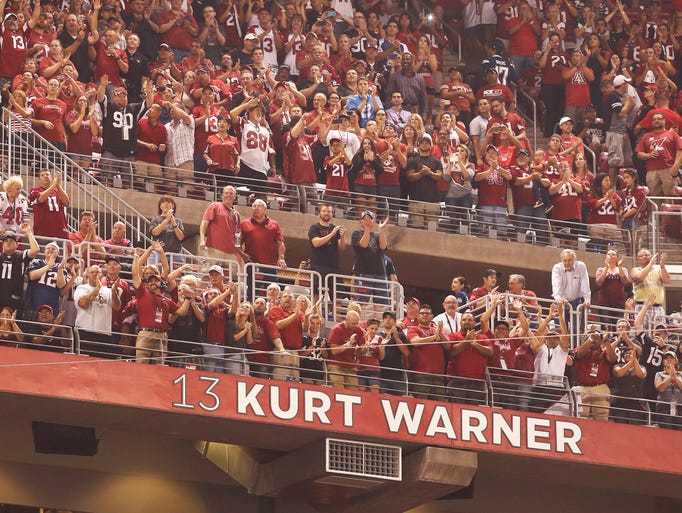



No comments:
Post a Comment